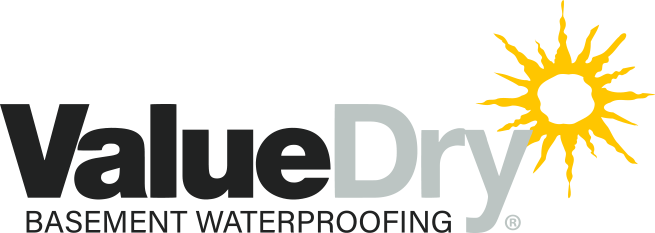Expert Pay Per Click Management Service
Lets discuss your goals. Schedule a free consultation with our team.






With our 3-step process
The digital world is changing fast, and many businesses are looking for equally fast and effective methods to position their brands before high-converting customers. But despite having access to advertising tools and multiple digital marketing services, many businesses are still invisible to their target market.
This is mainly due to increased competition, stricter industry regulations, the rise in ad blockers, changing customer demands, and elusive customers. Fortunately, you can increase your visibility and get results with Hit Me SEO’s Paid search advertising services.
The team at Hit Me SEO has mastered the art of running effective Google Ads (PPC) and paid search ads. We can help make yours a worthy investment.
At Hit Me SEO, we are committed to delivering top-notch paid search advertising services that drive results and help you achieve your digital marketing goals. Here’s what you can expect from our paid search advertising services:
We start by researching short and long-tail keywords relevant to your industry and target audience. The relevant keywords are not randomly added but are thoughtfully categorized into different ad groups and campaigns. This strategic structuring of search terms allows for precise targeting and efficient optimization throughout your ad campaign.
Our team of skilled professionals writes unique and creative ad copy tailored to each ad group, audience segment, and search advertising campaign. We understand the importance of compelling ad copy, and we continuously run split testing to ensure that your PPC ads achieve the highest click-through rates and conversions possible.
Effective bid management is critical to controlling your advertising costs and achieving your desired return on investment. We manage the bid parameters at the keyword level, allowing us to make data-driven decisions that optimize your paid search marketing.
Our team closely monitors and manages your marketing budgets to ensure budget pacing remains on track throughout your campaign. Our goal is to allocate your budget efficiently to achieve the most cost-effective campaign spending mix.
We believe in providing you with clear and detailed reporting so that you can track the progress and performance of your paid search advertising campaigns.
Our regular reports include essential metrics and insights that allow you to make informed decisions and see the tangible results of your investment. We also use these reports to make alterations to the campaigns and improve their efficiency.
Paid search advertising offers a range of significant benefits for businesses looking to improve their online presence and reach their target audience effectively. These benefits include:
Paid search ads provide instant visibility for your business on search engine results pages (SERPs). As soon as your campaign is approved on Google Ads, you may appear at the top of relevant search results, where potential customers can find you.
Paid search campaigns allow you to target your audience based on factors like keywords, location, demographics, and device type. This precision ensures that your ads are seen by users who are most likely to be interested in your products or services.
PPC gives you complete control of your budget. You can have monthly or daily limits, making it a flexible and cost-effective advertising option. You only pay when someone clicks on your ad, meaning you can allocate your budget efficiently.
You can track clicks, impressions, conversion rates, click-through rates (CTR), and more. This data allows you to measure the effectiveness of your campaigns and make data-driven adjustments.
Paid search allows you the opportunity to implement remarketing campaigns. You can re-engage users who have previously visited your website or interacted with your ads, increasing the chances of conversion.
You can leverage different ad formats, including text ads, display ads, shopping ads, and video ads. This flexibility allows you to choose the format that best suits your marketing goals and target audience.
Even if users don’t click on your paid ads, they still see your brand’s name and message in the search results. This increased exposure enhances brand recognition and trust.
We believe in building relationships that last.
At Hit Me SEO, we’re more than just a team – we’re your partners, boasting over 50 years of collective experience. But it’s not the years that count; it’s the heart and soul we pour into every project.
Our approach? It’s personal. We’re all about creating connections that last. We believe in service that’s as friendly as it is professional.
And here’s the real deal: We focus exclusively on one PPC management client in each service area. This means you get all our attention, creativity, and expertise, ensuring a PPC strategy that’s as unique and dynamic as your business.
★ ★ ★ ★ ★

Why? Because our commitment to exclusivity ensures that our clients receive undivided attention, tailored strategies, and unmatched dedication to help them stand out in their local market.
This focused approach allows us to deliver exceptional results, ensuring that our clients dominate their area and attract more leads online with maximum effectiveness.







Pay per click performance between December 2022 and December 2023
Once we receive your information, we’ll set up a meeting to discuss your firm’s performance and actionable steps you can take moving forward that will drive real results.
Some reasons your ad isn’t at the top even when you’re meeting the bid estimate include new advertiser competition on your target keyword. Also, it could be that the customer’s search query isn’t an exact match to your keywords. It is also important to note, that the top isn’t always the best place!
They serve different purposes; as such, they are equally important. Paid search is perfect for attracting an audience that knows what they want and is actively looking for it. Paid social ads are ideal for generating interest and building a relationship with your target audience.
Pay-per-click (PPC) advertising is a digital marketing model where advertisers pay a fee each time their ad is clicked by a user. It’s a way for businesses to promote their products or services online and drive traffic to their websites.
Ads typically appear on search engines like Google, as well as on social media platforms and other search platforms.
Advertisers place bids on keywords they want to rank for. When users search any of your targeted keyword phrases, the ad created appears at the top of the organic search results.
You can also tell Google what keywords to avoid! These are called negative keywords and should be an important part of any campaign.
The basic details you will need for a paid search campaign are:
If you have the above, Google will provide a walkthrough that does an okay job of helping you through the basics of setting up a campaign. However, we would strongly advise against spending money on the basic ad.
Remember, Google wants you to spend money. That is how they make money. And while they would prefer you to find success on their platform, they will take your money either way. So, even if a Google Ad campaign has all the basic elements above, and receives a high Optimization Score from their system, it can still be a massive failure.

“
Pay-per-click is where you go to get leads quickly and, if all goes according to plan, efficiently. We have our campaigns down to an effective iterative process that is designed to improve the quality of our ads and your leads while reducing overall costs. And we will work with you, so you know what is happening every step of the way.
~ Ben Douthwaite
Pay-per-click advertising through Google Ads is a powerful tool for small business owners looking to increase their reach and sales. But it’s not easy.
If you want to take your small business’s online presence to the next level and need expert guidance in implementing a successful PPC campaign, contact Hit Me SEO at:
240-477-7085
Our knowledgeable team is here to help you navigate the complexities of digital marketing and achieve your business goals through effective PPC advertising.